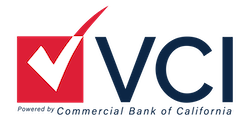The Automated Clearing House (ACH) system is a nationwide network through which depository institutions send each other batches of electronic credit and debit transfers. The direct deposit of payroll, social security benefits, and tax refunds are typical examples of ACH credit transfers. The direct debiting of mortgages and utility bills are typical examples of ACH debit transfers. While the ACH network was originally used to process mostly recurring payments, the network is today being used extensively to process one-time debit transfers, such as converted check payments and payments made over the telephone and Internet.
The Reserve Banks and Electronic Payments Network (EPN) are the two national ACH operators. As an ACH operator, the Reserve Banks receive files of ACH payments from originating depository financial institutions, edit and sort the payments, deliver the payments to receiving depository financial institutions, and settle the payments by crediting and debiting the depository financial institutions’ settlement accounts. The Reserve Banks and EPN rely on each other to process interoperator ACH payments–that is, payments in which the originating depository financial institution and the receiving depository financial institution are served by different operators. These interoperator payments are settled by the Reserve Banks.
